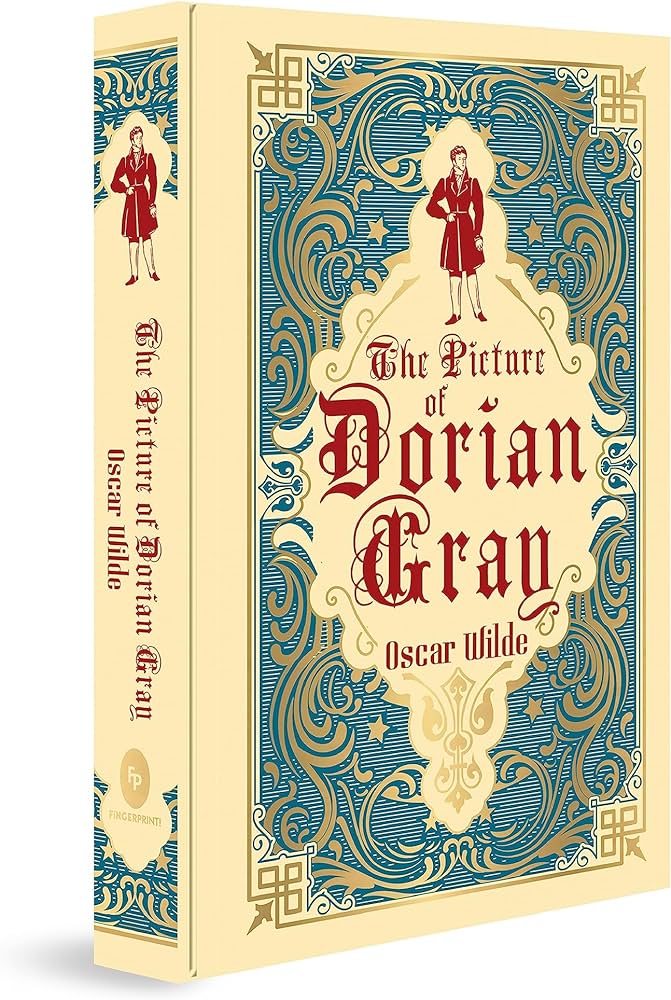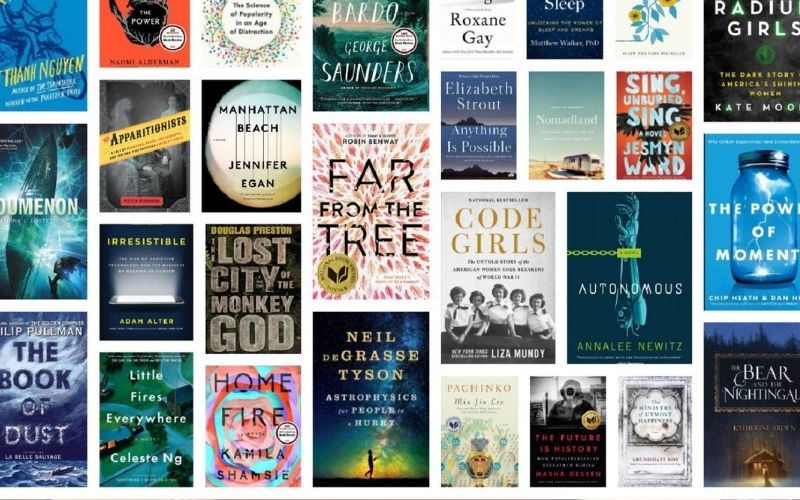Best 10 books of all time for reading at home and during rest


How to choose a book that you will definitely like?
Choosing a book that you will absolutely enjoy can be a delightful experience. To begin, it is essential to explore your interests and preferences. Reflect on your favorite genres, authors, or themes that resonate with you. Consider seeking recommendations from friends, family, or online communities that share similar reading tastes. Book reviews can also provide valuable insights into whether a book aligns with your preferences.
Another effective approach is to sample books before committing to them. Reading a few pages or chapters can help you gauge the writing style, plot, and characters, enabling you to determine if it captivates your interest. Additionally, many online platforms offer book previews or excerpts that allow you to delve into a book’s essence.
Why is it important to read classic literature?
Classic literature holds immense importance in our lives for several reasons. Firstly, it provides us with a deeper understanding of the human experience. These timeless works explore universal themes such as love, loss, ambition, and the complexities of human nature. Through the characters and their journeys, we gain insights into different perspectives and learn valuable lessons that are relevant to our own lives.
Moreover, classic literature offers a window into different historical periods and cultures. It enables us to explore diverse settings and immerse ourselves in worlds that may be vastly different from our own. This exposure cultivates empathy, broadens our worldview, and fosters a greater appreciation for cultural diversity.
Lastly, reading classic literature connects us to our literary heritage. These works have shaped the literary canon and continue to influence contemporary literature. By exploring the classics, we engage in a dialogue with past generations, contributing to the ongoing evolution of ideas and storytelling.
A brief overview of the meaning and plot of the book The Great Gatsby

The Great Gatsby, a literary masterpiece by F. Scott Fitzgerald, delves into the glittering world of the Roaring Twenties. Set amidst the opulence and extravagance of Long Island, New York, the novel unravels the complex tale of Jay Gatsby, a mysterious and enigmatic millionaire, through the eyes of Nick Carraway, a modest Midwesterner.
The story revolves around Gatsby’s relentless pursuit of his lost love, Daisy Buchanan, and his desire to recapture the past. Gatsby’s grand parties, with their endless flow of champagne and vibrant music, serve as a facade to mask his loneliness and longing. Fitzgerald skillfully explores themes of love, wealth, and the corrupted American Dream, ultimately exposing the emptiness that lies beneath the surface of the era’s glamour.
As the plot unfolds, secrets are unveiled, relationships are tested, and tragedy strikes, leading to a climactic ending that leaves readers contemplating the consequences of unattainable dreams and the destructive power of obsession. Through vivid descriptions and poignant symbolism, Fitzgerald paints a vivid picture of a society fixated on materialism and excess, ultimately highlighting the hollowness that can accompany the pursuit of wealth and status.
A brief overview of the meaning and plot of the book Murder on the Orient Express
Murder on the Orient Express is a captivating detective novel written by Agatha Christie. The story revolves around the renowned Belgian detective, Hercule Poirot, who finds himself on board the luxurious Orient Express, a famous train that travels from Istanbul to Calais. The book’s plot takes a thrilling turn when a passenger is found dead in his cabin, setting the stage for a complex and mysterious murder investigation.
Poirot, known for his meticulous attention to detail, begins to unravel the tangled web of clues and motives surrounding the murder. As he interviews each passenger, their secrets, pasts, and connections to the victim come to light, adding layers of intrigue to the narrative. The confined space of the train intensifies the suspense, as Poirot must navigate through a labyrinth of alibis and testimonies to uncover the truth.
Christie masterfully constructs a plot filled with twists and turns, keeping readers guessing until the very end.
A brief overview of the meaning and plot of the book Nineteen Eighty-Four
Nineteen Eighty-Four, a captivating novel penned by George Orwell, delves into a dystopian society ruled by an oppressive regime known as the Party. The story revolves around the life of Winston Smith, an ordinary citizen who works at the Ministry of Truth, which is responsible for rewriting historical records to align with the Party’s propaganda. Smith becomes increasingly disillusioned with the Party’s control and yearns for freedom of thought and expression. As he navigates the treacherous landscape of surveillance and manipulation, Winston embarks on a forbidden love affair with Julia, a fellow Party member. Together, they strive to challenge the Party’s dominance and seek liberation from its iron grip. Orwell’s thought-provoking narrative explores themes of totalitarianism, political manipulation, and the erosion of personal freedom. Nineteen Eighty-Four serves as a haunting cautionary tale, reminding readers of the dangers of unchecked power and the importance of preserving individual autonomy and truth.
A brief overview of the meaning and plot of the book The choice: embrace the possible
The Choice: Embrace the Possible is a captivating book that delves into the profound meaning of life and the power of personal decisions. Authored by a renowned philosopher, this book provides a thought-provoking overview of the human experience and the importance of embracing the endless possibilities that life presents.
The plot revolves around the protagonist’s transformative journey, as she navigates through life’s challenges and triumphs. Through a series of beautifully crafted narratives, the book explores the complexities of relationships, personal growth, and the pursuit of happiness. It encourages readers to reflect upon their own choices and the impact they have on their lives and the lives of those around them.
A brief overview of the meaning and plot of the book Norwegian Wood
Norwegian Wood, a captivating novel by Haruki Murakami, takes readers on a journey through the complex emotions and experiences of its protagonist, Toru Watanabe. Set in Tokyo during the late 1960s, the story explores themes of love, loss, and personal growth against the backdrop of a changing society. The book’s title is derived from the popular song by the Beatles, which serves as a recurring motif throughout the narrative.
The plot revolves around Toru’s relationships with two very different women: Naoko, a fragile and troubled young woman who was his best friend’s girlfriend before his untimely death, and Midori, an outspoken and vivacious classmate. As Toru navigates the complexities of these romantic entanglements, he is forced to confront his own feelings of guilt and longing. Murakami’s evocative prose delves deep into the characters’ psyches, capturing their melancholy and searching for meaning in a world that often feels alienating.
A brief overview of the meaning and plot of the book The Diary of a Young Girl
The Diary of a Young Girl, written by Anne Frank, offers a poignant and intimate glimpse into the life of a Jewish girl hiding from the Nazis during World War II. The book, composed as a series of diary entries, showcases Anne’s thoughts, emotions, and experiences while confined to a secret annex in Amsterdam.
Anne’s diary serves as her confidant, allowing her to express her fears, hopes, and dreams amidst the chaos and uncertainty of war. Through her words, readers witness the daily challenges faced by Anne and her companions, as they navigate cramped quarters, rationed food, and constant fear of discovery.
A brief overview of the meaning and plot of the book To Kill a Mockingbird
To Kill a Mockingbird, a renowned novel by Harper Lee, delves into the complex issues of racism and injustice prevalent in the deep South during the 1930s. The story is narrated through the eyes of Scout Finch, a young girl who observes and learns from her father, Atticus Finch, a morally upright lawyer. The plot revolves around Atticus defending Tom Robinson, a black man falsely accused of assaulting a white woman. As the trial unfolds, the town’s prejudiced attitudes become starkly evident, leading to tension and conflict within the community.
Throughout the book, Lee skillfully explores themes of empathy, tolerance, and the loss of innocence. Scout and her brother Jem befriend a reclusive neighbor, Boo Radley, who becomes a symbol of compassion and understanding. Lee emphasizes the importance of understanding others without prejudice, as well as the consequences of societal injustice.
To Kill a Mockingbird stands as a powerful critique of the deep-rooted racial prejudices in society, while also highlighting the potential for compassion and growth within individuals. It serves as a timeless reminder of the importance of equality and the necessity of challenging prevailing norms for a more just and inclusive society.
A brief overview of the meaning and plot of the book Little Women
Little Women is a beloved classic novel written by Louisa May Alcott. Set in the 19th century, it follows the lives of the four March sisters – Meg, Jo, Beth, and Amy – as they navigate the challenges of growing up and finding their place in the world.
The story begins with the sisters’ childhood, their dreams, and their interactions with their loving mother, affectionately known as Marmee. As they mature, they face various trials and tribulations, including financial struggles, illness, and the pains of unrequited love. Each sister possesses unique qualities and aspirations, with Jo emerging as the central character, portrayed as a fiercely independent and aspiring writer.
Amidst their individual journeys, the sisters remain united by their devotion to family and their unwavering support for one another. The novel explores themes of sisterhood, friendship, love, and the pursuit of personal dreams. It also delves into societal expectations and the limitations placed upon women during that era.
A brief overview of the meaning and plot of the book The Picture of Dorian Gray

“The Picture of Dorian Gray” is a captivating novel written by Oscar Wilde that explores the themes of vanity, beauty, and the consequences of immorality. The story revolves around the young and handsome Dorian Gray, who becomes infatuated with his own portrait painted by the talented artist Basil Hallward. As Dorian desires eternal youth and beauty, he unknowingly makes a wish that his portrait ages while he remains untouched by time. This leads to a dark and twisted path of self-indulgence and moral decay.
Dorian indulges in a life of hedonism, committing various immoral acts while his portrait bears the burden of his sins, deteriorating in appearance. As he becomes more corrupted, the portrait reflects his inner ugliness, while his external beauty remains intact. The novel explores the conflict between the pursuit of physical pleasure and the deterioration of one’s soul.
A brief overview of the meaning and plot of the book Pride and Prejudice
Pride and Prejudice, a timeless literary masterpiece written by Jane Austen, delves into the intricate social dynamics of 19th-century England. Set in the fictional town of Meryton, the novel follows the lives of the Bennet family, particularly the second eldest daughter, Elizabeth. The plot revolves around the themes of love, marriage, and societal expectations.
The story unfolds when the affluent Mr. Bingley arrives in town, accompanied by his enigmatic friend, Mr. Darcy. The charming Mr. Bingley quickly forms an attachment to Elizabeth’s elder sister, Jane. However, Elizabeth’s initial impression of Mr. Darcy is marred by his aloof and seemingly arrogant demeanor. As their paths continue to intersect, misunderstandings and misinterpretations sow the seeds of pride and prejudice between the two.
Through her sharp wit and insightful observations, Austen explores the consequences of hasty judgment and societal pressures. The novel navigates the complexities of love, as Elizabeth and Mr. Darcy confront their personal biases and confrontations.







